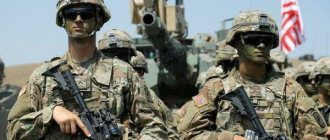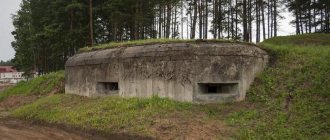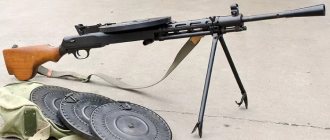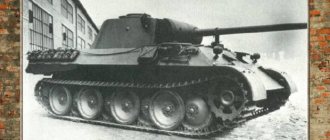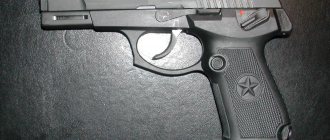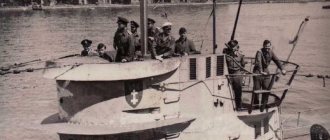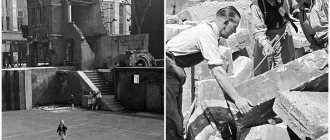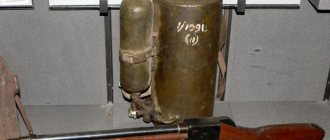Bottles against tanks
Molotov cocktails as a means of combating armored vehicles have been known since the 1920s, when they found use during the Rif War (1921−1926). Subsequently, petrol bottles were used during the Spanish Civil War and the Sino-Japanese War. Japanese infantrymen also used similar weapons in the battles at Khalkhin Gol. Molotov cocktails began to appear among the Red Army soldiers in the summer of 1941, when, with the loss of a significant part of anti-tank weapons and a shortage of grenades, it was necessary to obtain a simple and effective means of combating German tanks in close combat.
Poster from the Great Patriotic War. (liveinternet.ru)
Paragraph 1 of the GKO Resolution of July 7, 1941 indicated the need for the USSR People's Commissariat of Food Industry to organize from July 10 this year. g. equipment of 120 thousand bottles per day of a viscous mixture. However, even earlier, during the defense of Minsk, soldiers of the 100th Infantry Division, Major General I. N. Russiyanov, used homemade glass flasks and bottles filled with gasoline to destroy enemy tanks. Ivan Nikitovich himself later recalled: “At the division command post, the commanders of the headquarters and political department were given instructions on the use of this means of fighting tanks. The instructions sound, however, too loudly. There could be no instructions, and I had to take on the role of “instructor”. Moreover, this was the first time I threw these “glass grenades” myself.”
KS mixture
There are different versions regarding the origin of the term “Molotov cocktail”. The most likely opinion is that the Finns began to use flammable mixture bottles en masse during the war of 1939-1940. and it was called “Cocktail for Molotov” after the name of the Soviet People's Commissar for Foreign Affairs. When the Red Army began to use this weapon in 1941, the name became “Molotov Cocktail”: the pretext disappeared. Various mixtures were used to fill the bottles. The most advanced weapons were bottles with a self-igniting mixture of KS. Such a bottle, falling on the armor of the tank, broke, and the mixture ignited, flowed into all the cracks and caused a fire. When burning, the mixture emitted white smoke, blinding the crew. The high (from 800 to 1000 degrees) combustion temperature also often forced tankers to leave the tank. But every Soviet soldier understood perfectly well that if a stray bullet or shrapnel hit such a bottle while it was in his hands, death would be terrible.
The most effective was throwing bottles from narrow and deep (full-length) trenches and crevices, when, having passed an enemy tank over him, a fighter could hit its engine. The bottles had to be thrown from a distance of 20 meters, although in reality it was much less. It was recommended to use Molotov cocktails together with grenades - damage and immobilize the tank by throwing a grenade and then set it on fire with a Molotov cocktail. True, it was difficult to knock out a tank with one bottle. It often took at least 3-5 bottles to disable a tank. No less often than to destroy armored vehicles, bottles were used to destroy the enemy in pillboxes and bunkers, as well as in street combat. In addition, Molotov cocktails were used by partisans and sabotage groups to set fire to structures - enemy warehouses, headquarters and other structures.
Making Molotov cocktails in Tula. (warspot.ru)
In total, during the Great Patriotic War, according to official data, 2,429 tanks, self-propelled guns and armored personnel carriers, 1,189 pillboxes, 2,547 other fortified structures, 739 vehicles and 65 warehouses were destroyed or disabled using incendiary bottles.
The advantage of this weapon was its simplicity and low cost of manufacture - production was often established directly in the troops and partisan detachments. The disadvantages include, first of all, the danger of injury to the fighters themselves, armed with such weapons, in case of careless handling or a bullet or shrapnel getting into the bottle. The use was also complicated by primitive fuses, which required time to prepare the bottle for throwing (not all bottles were filled with KS liquid). In close combat this was extremely difficult and could often cost a fighter his life. Carrying a bag with bottles was also difficult, and whenever possible, the fighters tried to throw and not carry the dangerous load. Therefore, they were soon forced to switch to centralized transportation of bottles and issue them to the soldiers immediately before repelling a tank attack. Bottles were transported in boxes covered with earth or sand. Storage of Molotov cocktails was permitted no closer than 100 meters from other property. In addition to throwing bottles at a target, they practiced setting up unique fields of bottles with a mixture. Like mines, the bottles were installed in a checkerboard pattern. Success, as a rule, was achieved through interaction with other anti-tank defense systems, when infantry or artillery occupied positions behind such a bottle field. The task was rather not to destroy, but to slow down or stop enemy equipment. When the tank hit, an ignition occurred, and the enemy crew was forced to stop or turn the tank sideways, turning it into a convenient target for anti-tank gun crews or artillerymen. In a number of cases, bottles were used to form a barrage of fire capable of stopping an attack by infantry and armored vehicles.
Molotov cocktails in the Red Army
At the request of the FEDERAL SERVICE FOR SUPERVISION IN THE FIELD OF COMMUNICATIONS, INFORMATION TECHNOLOGY AND MASS COMMUNICATIONS, the composition and method of manufacturing Molotov cocktails were removed.
Just a general historical description. HISTORY OF THE CREATION OF “FLIGHTING BOTTLES”. Incendiary bottles (Molotov cocktails) have proven to be an effective means of combating armored vehicles in close combat. Flamethrower and incendiary weapons belong to the chemical forces. However, one type of it was used everywhere during the Great Patriotic War. We are talking about different versions of Molotov cocktails. Cheap and easy to manufacture, they first found widespread use against tanks during the Spanish Civil War. The best option was to hit the air intake grille of the engine (engine-transmission) compartment of an armored vehicle - then the burning mixture penetrated into the engine, which led to a fire inside the tank and detonation of the ammunition. In the summer of 1939, Soviet tank crews clashed with Japanese bottlers on Khalkhin Gol, and in the winter of 1939-1940 with Finnish ones on the Karelian Isthmus. The combat regulations of the Red Army infantry of 1940 already proposed creating groups of tank destroyers with bundles of grenades and incendiary bottles to combat tanks that had broken through in the depths of the defense. This recommendation was very useful at the very beginning of the Great Patriotic War. Marshal I. Kh. Bagramyan recalled the first weeks of the war on the Southwestern Front: “There was not enough artillery - they were met (note - German tanks) with bunches of grenades. Unfortunately, there were not always enough grenades. Then they remembered the experience of the Republicans of Spain, began to collect bottles, fill them... the weapon is simple, but in brave and skillful hands it is quite effective.” The order of the Supreme Command Headquarters dated July 6, 1941 demanded: “... in order to intensify the fight against enemy tanks, immediately create companies and teams in regiments and battalions to destroy enemy tanks. Select the most daring, courageous and enterprising people for these teams. Arm the teams with anti-tank grenades, bottles with flaming liquid, packages with explosives and, if there are firing points, light tank flamethrowers.” And on July 7, 1941, the State Defense Committee adopted a resolution “On anti-tank incendiary grenades (bottles)”:
Resolution GKO-43ss. Anti-tank bottles
Beer and vodka bottles with a capacity of 0.5-0.75 or 1 liter were filled with flammable mixtures No. 1 and No. 3. For their preparation, flammable mixtures were used, thickened with a special powder OP-2, developed in 1939 by A.P. Ionov at NII-6 (People's Commissariat of Ammunition). Viscous fire mixtures were intended for jet flamethrowers, but were also useful for incendiary bottles - when burned, they gave the same large flame as unthickened fuel, burned for a long time, were stable and adhered well to metal surfaces. In this they were similar to napalm, which appeared in 1942 in the United States. The burning time of mixtures No. 1 and No. 3 (usually having a dark brown color) was 40-60 seconds, the temperature developed was 700-800 degrees Celsius, during combustion black smoke was formed, and after combustion a solid opaque film was formed. Military engineer 3rd rank K. Soldadze, who served in the Separate Special Purpose Motorized Rifle Division of the NKVD, developed a new viscous fire mixture BGS (according to the initial letters of the mixture components), which was also used to equip incendiary bottles from 1941. The effectiveness of their use depended not only on the contents, but also on the type of fuse. Some were put into action faster, others were much more difficult and, accordingly, took longer. Since August 1941, a more reliable chemical fuse was used by A. T. Kuchin, M. A. Shcheglov and P. S. Solodovnik: an ampoule with a special one was attached to the bottle with an elastic band. chemical composition, here we can see the development of the idea of the chemical “Kibalchich fuse”, which the Narodnaya Volya members installed on their bombs. The mixture ignited as soon as the ampoule was broken along with the bottle; its action did not depend on the weather, the presence of matches, etc. In order to increase the reliability of ignition when hitting a target, four ampoules were attached around the circumference of one bottle. In Tula, G. A. Korobov developed a simple ignition mechanism based on a blank rifle cartridge and a spring-loaded striker with a pin. Chemical and pyrotechnic fuses improved the reliability of operation and the safety of handling incendiary bottles, but they still had to be prepared in the trenches immediately before use. The most effective were “glass grenades” with self-igniting KS liquid - the pinnacle of the “evolution” of incendiary bottles. It was a yellow-green or dark brown solution that had a low melting point (it had the smell of rotten eggs). The burning time of such a liquid is 2-3 minutes, the temperature is 800-1000 degrees Celsius. The abundant white smoke released during combustion also had a blinding effect. The abbreviation KS was deciphered both as “Koshkinskaya Mixture” (after the name of the inventor N.V. Koshkin) and as “Kachurin-Maltman” (after the names of other developers of incendiary mixtures). However, the director of the Research Institute of Fertilizers, Insecticides and Fungicides S.I. Volfkovich wrote in his memoirs: “The work of Kuzmin and Sergeev, who proposed a self-igniting composition (KS), carried out in the first period of the war, was of great importance. Mass production of bottles with this composition was first organized at the NIIUIF pilot plant by N. N. Postnikov, K. I. Makarin, A. S. Solovyov, E. E. Zusser, N. D. Talanov. As a result of an in-depth physical and chemical study of the properties of various compositions, NIUIF employees developed measures that eliminated the danger of rupture of glass and metal vessels with CS (works by V.V. Illarionov, R.E. Remen and the author of these lines). For which they were awarded the Marshal of Artillery Award (that is, the Chief of Artillery of the Red Army N.N. Voronov). The KS mixture was called both “old cognac”, and “an insidious mixture”, and “a cocktail of death”. But its most famous nickname is the “Molotov cocktail,” which later spread to all types of incendiary bottles. Instead of the usual label, a simple instruction manual was stuck on the bottle (however, due to the haste of preparation, there were also bottles with the “Vodka” or “Port” labels still intact).
CHECK AT THE FRONT. On August 2, 1941, People's Commissar of Defense I.V. Stalin approved the Instructions for the use of incendiary bottles. According to it, regiments and divisions began forming and training groups of tank destroyers with incendiary bottles. The throwing range was set to 30 m, but in reality it was 15-20 m. The infantrymen’s initial distrust of the “glass” soon gave way to surprise: “Tanks are on fire from bottles!” The commander of the 1st Guards Rifle Division, Major General I. N. Russiyanov, recalled how after the first battle using “hand glass artillery,” a captured German tank corporal said: “If I had known that the Russians had such powerful incendiary weapons, I would turn back." When we showed him this “powerful incendiary weapon,” he was very surprised.” But it was very difficult to “blow up” a tank with bottles alone. From the memoirs of D.F. Medvedev, commissar of the 2nd battalion of the 30th regiment of the 13th Rostokinsky militia division, who fought in September 1941 in the Smolensk direction: “...They started collecting bottles of fuel, formed a group of 18 people and they sent me blow up tanks with these people. We went to the right, to the river, where there was a ditch. There, according to our assumption, tanks were supposed to be transported there. We had to light them there. When we crawled to the intersection, the Germans noticed and opened mad fire on us from tanks... We still climbed into the anti-tank gap. One of our people had a bullet hit a fuel bottle. It caught fire. I had to rip everything off him and leave him completely naked. We stayed there until dark. One fighter crawled up and threw a bottle. The bottle caught fire, but the tank turned into the wind, started moving, and the wind blew away the fire. It was not possible to damage the tank." In the fall of 1941, tank destroyer groups began to be created in all rifle units of the Red Army. Each group consisted of 9-11 people, who, in addition to small arms, had 14-16 anti-tank grenades and 15-20 incendiary bottles. The latter were used not only in defense. Thus, the Instructions for organizing an offensive, announced for the troops of the 29th Army on September 23, 1941, stated: “During the attack, the infantry attacks enemy firing points, using hand grenades and petrol bottles as much as possible, and then switches to bayonets.” Throwing bottles proved successful from trenches and crevices - especially at the rear of a tank or assault gun after passing over cover. A bottle hitting the front of a tank usually only “blinded” the crew. Throws outside cover or from shallow trenches led to heavy losses among the fighters. A bottle that accidentally broke in the hands due to a careless movement or when hit by a bullet immediately ignited. The best results were obtained by using bottles and grenades along with other anti-tank weapons. Already in the fall of 1941, near Moscow, they tried to assign 1-2 crews of anti-tank rifles to a group of tank destroyers. Such measures allowed rifle units “during the period of a tank attack not only to cut off enemy infantry, but also to take an active part in the fight against the tanks themselves.” “Anti-tank units” were practiced - armor-piercing soldiers and riflemen with automatic weapons and incendiary bottles were placed near the anti-tank gun. The directive of the commander of the Western Front, Army General G.K. Zhukov, dated October 19, 1941, ordered “to place anti-tank detachments on the rear lines and rear roads, consisting of 1-2 anti-tank guns, a platoon of fighters with grenades and KS bottles, a platoon of sappers with mines, a company shooters." And two days later, the military council of the front ordered the formation of “in each rifle regiment one anti-tank fighter squad consisting of one middle commander and 15 soldiers, including a sapper squad... 150 anti-tank grenades, 75 bottles of KS, 3 PPSh, anti-tank mines, semi-automatic rifles... Each rifle division has two fighter squads... three army mobile squads.” At the same time, anti-tank strongholds began to appear on the front line and anti-tank areas in the depths of the defense. The order to all army commanders, division and regiment commanders of the Western Front stated: “Tank destroyers with anti-tank grenades, bundles of conventional grenades and bottles of flammable liquid are an effective means of close combat against tanks. Groups of tank destroyers must be prepared at each strong point.” During the Battle of Stalingrad, each rifle company created 2-3 groups of tank destroyers, usually consisting of 3-6 Red Army soldiers under the command of a sergeant, sometimes with 1-2 anti-tank rifle crews. Each fighter had a rifle, a carbine or a submachine gun, two hand anti-tank grenades, and 2-3 incendiary bottles. Experienced fighters spent an average of 2-3 pieces of glass to destroy one tank. Typically, a rifle division maintained a constant supply of incendiary bottles (2000-2500 per division, at least 700 per rifle regiment). The 1942 infantry combat manual required each soldier to “be able to hit tanks. If tanks advance without infantry, it is necessary to hit them with anti-tank grenades, bottles with a flammable mixture, fire at the viewing slots, throw bunches of grenades and anti-tank mines under the tracks, destroy the tankers with fire... If the tanks advance with infantry, only specially appointed people should fight the tanks fighters, and everyone else is obliged to hit the infantry with fire and grenades.” Tank destroyers used this technique - throwing an anti-tank grenade or a bunch of grenades into the chassis of the tank, and after it stopped, throwing a bottle at the stern. Thus, for example, on July 18, 1943, near the village of Novaya Zhizn, the corporal of the 3rd machine gun company of the 290th rifle regiment P.F. Khramtsov set fire to two enemy tanks, and on June 4, 1944, a private of the 2nd regiment of the 50th rifle division R. S. Smishchuk destroyed 6 tanks in the battle near Mount Roglui near Iasi. The combination of anti-tank hand grenades and incendiary bottles continued until the end of the war. Thus, on February 17-25, 1945, when units of the 7th Guards Army repelled an enemy counterattack, fighter fighters used incendiary bottles to destroy 40 tanks, 6 armored personnel carriers, and 3 assault guns on the bridgehead on the western bank of the Hron River (Czechoslovakia). In Budapest, on the day of fighting on January 10, 1945 alone, assault groups and tank destroyers of the 155th Infantry Division used up 57 incendiary bottles. The “combat count” of bottles is impressive: according to official data, during the Great Patriotic War, with their help, Soviet soldiers destroyed 2,429 tanks, self-propelled guns and armored vehicles, 1,189 pillboxes and bunkers, 2,547 other fortified structures, 738 vehicles and 65 military warehouses. Incendiary bottles were also used to destroy transport vehicles, pillboxes, bunkers, warehouses, aircraft at airfields, manpower, buildings, fire and combined barriers. Already in defensive battles near Moscow and Leningrad, fire shafts and fields appeared. In the bottle fields, incendiary bottles were placed in a checkerboard pattern, sometimes in combination with anti-tank mines. The calculation was made that the tank or armored vehicle would crush the bottle and the burning liquid would spread over the chassis, forcing the crew to stop or turn around to put out the fire and, in doing so, run over a mine. The order for the troops of the Western Front dated December 8, 1941 contains the following examples: “The fire shaft put into action on December 3, 1941 at the front of the 5th Army burned for 4 hours, the height of the flame reached 2-3 meters, and in some places 4-5 meters. The enemy tanks were forced to change their combat course and move along the defensive front, exposing the most vulnerable (side) part to anti-tank fire, as a result of which up to 20 enemy tanks were destroyed by artillery and anti-tank rifles, bottles and flamethrowers in front of the rampart. Barriers made from bottles with flammable liquid delayed the movement of enemy tanks, and some of them caught fire in these fields. In total, 15 bottle fields were set up on the front of the 5th Army with a total consumption of bottles of up to 70,000 pieces.” In the middle of the war, the practice of creating “fire mines” spread - about 20 bottles of KS were placed around an anti-tank mine in a radius. The detonation of a mine was accompanied by the formation of a column of fire that hit the tank. Another example of the ingenuity of our compatriots was the “tank rocker”: curved arcs were attached to a frame made of metal pipes and the structure was buried so that when a tank collided, the rocker would tip over and throw KS bottles onto the tank. It is no coincidence that in September 1942, in the defense zone of the 37th Army on the western bank of the Terek and the southern bank of Baksan, in addition to 26,250 anti-tank mines, 250 anti-tank fire mines were installed by 300 “tank rockers”. Throughout the four war years, various methods were developed to increase the throwing range of a fire bottle. Already at the beginning of the war, the Red Army soldiers received a rifle mortar for shooting bottles, the creator of which is considered to be V. A. Tsukerman (later a famous physicist, Hero of Socialist Labor, laureate of the Lenin and State Prizes). The mortar was attached to the barrel with a bayonet connection. The KS bottle inserted into it rested on a perforated membrane through a wooden wad, and the shot was fired with a blank (throwing) cartridge. Shooting was carried out with the butt resting on the ground. The aimed firing range of a bottle was indicated at 80 m, the maximum - 180 m. Near Moscow, a rifle squad was supposed to have two such mortars, a rifle platoon - 6-8. They were also used near Leningrad. The bottles for them were selected with thicker and stronger glass and still often broke, the shooting accuracy turned out to be low, which is why the mortars were not popular. At the same time, at the fronts they were used to throw delayed-action thermite bombs or smoke bombs when shelling pillboxes or bunkers. Bottle launchers were a forced improvised means. It is characteristic that in 1941, at the NIABT training ground in Kubinka, mortars for throwing incendiary bottles to small-caliber rifles and hunting rifles, which were then armed with the people's militia, were tested. Various “mechanical” bottle throwers were also used.
FIREBOTTLES IN THE GERMAN TROOPS. The use of incendiary bottles by the Wehrmacht can be judged from the instructions for conducting street fighting given by the commander of the 1st Guards Tank Brigade, Major General M. E. Katukov on December 6, 1941: “The enemy... often lets the advanced units through and then fires from the rear at our troops, dropping bottles of fuel on our tanks.” The photographs also show German soldiers with Molotov bottles. But not at all as often as the Red Army soldiers.
№ 1.
№ 2.
№ 3
№ 4
No. 1 - Pouring Molotov cocktail into bottles, Stalingrad 1942; No. 2 - Production of Molotov cocktails at one of the Moscow factories, 1941; No. 3 -German assault group in Stalingrad with incendiary bottles; No. 4 -Still from the film “They Fought for the Motherland” with a Molotov cocktail.
Literature / additional materials and links:
- NPO USSR, Moscow August 12, 1941 Incendiary bottles. ()
Bottle Launcher
To increase the range of destruction of tanks by bottles with a combustible mixture, various devices were created, one of which was a bottle launcher - a mortar made on the basis of a three-line rifle, to which a special attachment was attached. Only bottles containing the KS mixture were used for shooting. We tried to select bottles with thicker glass. Shooting from a bottle thrower was not very accurate, and the danger of the bottle bursting and the shooter being hit by the mixture was quite high, so the production of bottle throwers was discontinued in 1942. Individual cases of the use of this weapon were recorded in the battles of Moscow and Leningrad.
Memo on the combat use of flammable mixture bottles. (armorboy.ru)
The use of Molotov cocktails during World War II was not limited to the Red Army. A similar tool was available in most armies of the world. The US Army used a special glass grenade. True, it was not intended to fight armored vehicles, but to set fire to all kinds of structures. Similar means were used in the Italian army. A large number of Molotov cocktails were stockpiled in England to arm the militia in the event of an invasion by German troops. From the very beginning to the end of the war, gasoline bottles were used by the army of the land of the rising sun. Nowadays, Molotov cocktails are also often seen in footage of street riots.
Poison Clinic
The propane-butane mixture does not cause physical dependence, but, as with any form of substance abuse, a mental attraction to sniffing develops quite quickly. The toxic effect after inhalation of lighter gas develops according to several phases.
Intoxication phase
Occurs a few minutes after the gas mixture for lighters enters the lungs. A person continues to perceive the surrounding reality, can make contact, but his consciousness becomes clouded, his vision is blurry, he is characterized by a shaky gait, coordination disorders, pronounced joy and high spirits.
Against the background of progressive euphoria, a slowdown of all reflexes is observed. With prolonged sniffing, the euphoric mood can be replaced by aggression and other behavioral disorders that are unsafe for others.
Stage of distortion of consciousness
The drug addict loses control over his own body, loses his balance, while feeling a feeling of incredible lightness and omnipotence. Consciousness changes qualitatively - a person can leave the window, run out under a car and perform other actions against the backdrop of obsessive thoughts and visions that have nothing to do with reality. In this state, he does not recognize loved ones and does not make adequate contact with others. Simultaneously with these manifestations of the toxic effect, a decrease in the pain threshold is noted. The skin loses sensitivity. A substance abuser can cause fatal injuries to himself.
Hallucination phase
A person ceases to recognize himself as a person. Hallucinatory visions completely fill his consciousness - he can see himself as an animal, a plant, etc. Time stops, there is no orientation in space. There is pronounced tremor, a tendency to convulsive seizures, and mydriasis (dilated pupils that do not respond to light).
As you continue to inhale the gas mixture for lighters, the condition of the drug addict worsens. Lethargy, lethargy, and a state of stupor sets in - deep depression of consciousness, in which the risk of developing coma and its immediate complications is increased.
For gas toxicomania there is no definition of tolerance and dose-dependent effect. Any sniffing experience can be fatal. After the drug stops working, withdrawal symptoms or withdrawal symptoms develop. In the absence of the next dose of the gas mixture, it can last from several days to several months, depending on the severity of mental dependence. During withdrawal symptoms, substance abusers suffer from severe headaches, nausea, and convulsions.
